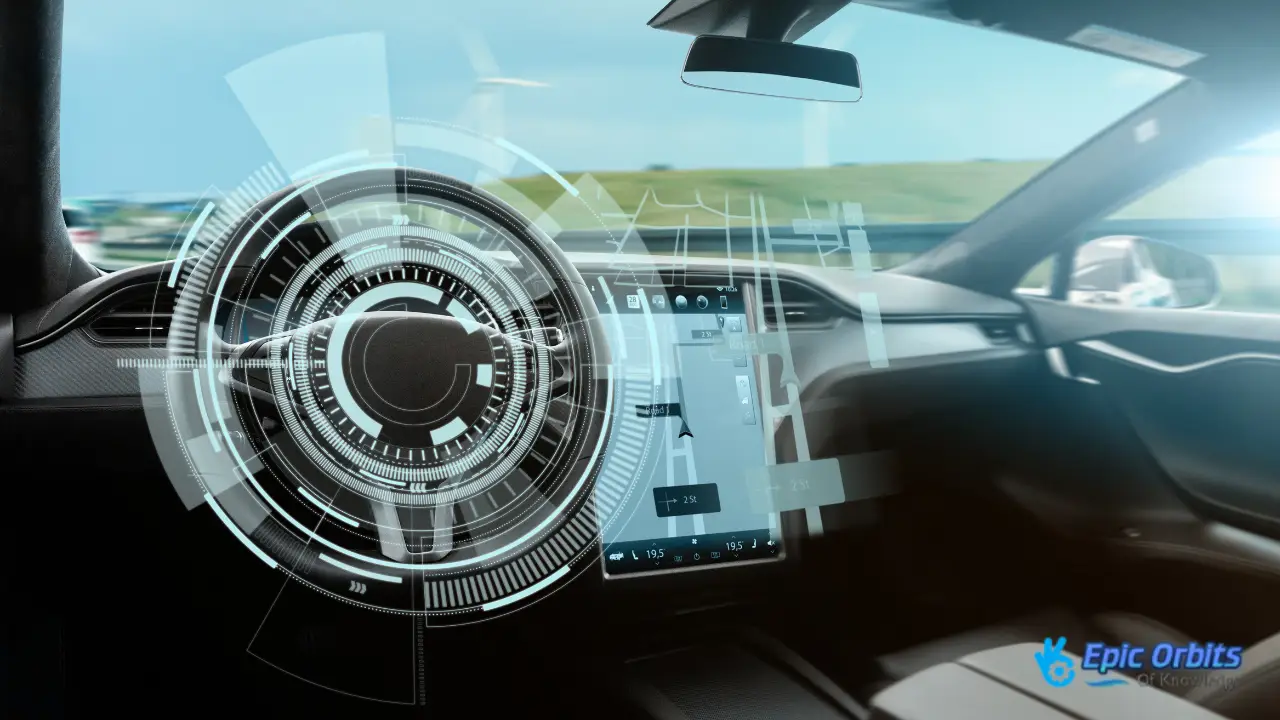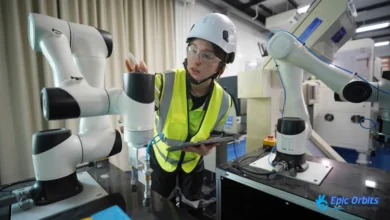Building Trust in Autonomous Systems: Ethics, Safety, and Human Oversight in the Age of AI
Discover how ethics, safety, and human oversight shape trust in autonomous AI systems and ensure responsible innovation.

Recently, autonomous AI systems have shifted from speculative fiction to real-world deployment. From AI autonomous vehicles navigating urban environments to autonomous AI customer service platforms handling tens of thousands of user queries, these systems are becoming deeply woven into modern society. As we entrust more responsibilities to autonomous vehicles, autonomous ground vehicles, robotic agents, and decision-making algorithms, it becomes vital to ask: how can we build trust in autonomous systems? How do we ensure that autonomous artificial intelligence behaves ethically, remains safe, and stays under meaningful human oversight?
Understanding how autonomous AI systems work is the first step. Beyond the algorithms and sensors, there are parallels to the autonomic nervous system in biology, which can guide design. Ethical standards, safety protocols, and regulatory frameworks must keep pace. Trust emerges only when transparency, accountability, and oversight are present. This article focuses on these issues. We explore technical, ethical, legal, and operational dimensions of autonomous systems and propose a forward-looking path to building long-term trust in fully autonomous systems. Whether you are an engineer, policymaker, executive, researcher, or concerned citizen, these insights will help you navigate the age of autonomous artificial intelligence with clarity.
Understanding How Autonomous AI Systems Work in Modern Society
At the core of autonomous AI systems lies a sophisticated network of algorithms, sensors, and machine learning models that enable them to operate independently. These systems can process vast amounts of data in real time, learn from experiences, and make decisions without direct human intervention. To grasp how autonomous AI systems function, it’s crucial to consider their architecture, data acquisition, and decision-making processes.
1. Architecture of Autonomous AI Systems
Autonomous AI systems comprise several interconnected components: perception, reasoning, and action. Perception involves gathering data through sensors, such as cameras and LIDAR, to understand the environment. Reasoning is the system's analytical capability, utilizing algorithms to process the data and derive meaningful insights. Finally, action refers to the system’s ability to execute decisions, such as navigating an autonomous ground vehicle or interacting with customers via chat interfaces.
2. Data Acquisition and Machine Learning
Machine learning plays a critical role in enabling autonomous systems to adapt and improve over time. By training on large datasets, these systems can identify patterns and adjust their algorithms accordingly. For instance, an AI autonomous vehicle learns to recognize road signs, pedestrians, and obstacles through repeated exposure to these elements during training.
3. Integration into Daily Life
The applications of autonomous AI systems are vast and varied. In transportation, autonomous vehicles (AVs) aim to reduce traffic accidents and streamline logistics by optimizing routes. AI-powered chatbots and virtual assistants help businesses respond to customers faster and make their experience better. As these systems become more a part of daily life, they change what people expect from productivity, safety, and personal interactions.
However, while the technological potential is immense, the implementation of these systems raises important questions regarding the limits of autonomy, ethical implications, and the necessity of human oversight.
Key Components:
| Component | Function |
|---|---|
| Sensors | Gather environmental data (e.g., cameras, LIDAR) |
| Perception Module | Interprets sensor data to understand surroundings |
| Decision Engine | Uses AI models to choose optimal actions |
| Actuators | Execute decisions (e.g., steering, braking) |
Applications:
- Autonomous vehicles: Navigate roads, avoid obstacles, and follow traffic laws.
- Autonomous ground vehicles: Used in agriculture, mining, and military operations.
- Autonomous AI customer service: Chatbots and virtual agents handle inquiries, complaints, and transactions.
These systems are increasingly embedded in daily life, offering convenience and efficiency. However, their complexity and opacity raise concerns about reliability, bias, and accountability.
Establishing Ethical Standards for Autonomous Systems
As we develop and deploy autonomous AI systems, establishing robust ethical standards is paramount. These standards should address accountability, fairness, and the moral implications of decisions made by AI.
2. Framework for Ethical Standards
A well-defined ethical framework can guide research, development, and deployment efforts for autonomous AI systems. Such a framework should consider:
- Transparency: Clear communication of how an autonomous system makes decisions is critical. Users should be informed about the data inputs, algorithms at play, and the logic behind AI decisions.
- Fairness: AI systems must be designed to avoid bias and discrimination. Ethical considerations should include how data is collected and the potential repercussions of unfair algorithmic decisions.
- Accountability: Defining accountability in autonomous systems is essential. Understanding who is responsible for an AI’s actions—be it developers, users, or the AI itself—is crucial in mitigating risks associated with autonomy.
- Human Dignity: Ethical frameworks should prioritize human dignity and rights. AI systems should enhance human life rather than detract from it, emphasizing inclusive and equitable benefits.
3. Implementation of Ethical Standards
To put these ethical standards into action, technologists, ethicists, policymakers, and the public all need to work together. Developing industry-wide guidelines and best practices can create a foundation for responsible AI deployment.
Furthermore, diversity in AI development teams can enrich the conversation about ethical standards by bringing multiple perspectives to the table, ensuring a comprehensive approach.
Safety Protocols in AI Autonomous Vehicles and Autonomous Ground Vehicles

Safety is the cornerstone of trust in autonomous vehicles and autonomous ground vehicles. These systems must operate reliably under diverse conditions and respond appropriately to unexpected events.
Safety Measures:
- Redundancy: Backup systems for critical functions.
- Simulation Testing: Virtual environments to test edge cases.
- Real-Time Monitoring: Continuous diagnostics and alerts.
- Fail-Safe Mechanisms: Emergency protocols in case of failure.
Regulatory Standards:
| Region | Regulation |
|---|---|
| EU | General Safety Regulation (GSR) |
| US | Federal Motor Vehicle Safety Standards (FMVSS) |
| Global | ISO 26262 for functional safety |
Despite advancements, incidents involving autonomous vehicles indicate that they require rigorous safety validation. Public confidence hinges on demonstrable safety records and transparent incident reporting.
Human Oversight and Decision-Making in Autonomous AI Systems
While autonomous AI systems have the potential to operate independently, the importance of human oversight cannot be overstated. Ensuring safety, accountability, and ethical compliance requires striking the right balance between automation and human intervention.
1. Role of Human Oversight
- Decision-Making in Complex Situations: In critical scenarios, human judgment can be invaluable. For example, while autonomous vehicles can navigate routine traffic, unexpected situations—like a child running into the street—may require human intervention.
- Training and Monitoring: Human operators should be trained to monitor autonomous systems actively. Maintaining awareness of AI behaviors and capabilities enables operators to intervene when necessary, ensuring a safety net for autonomous systems.
- Ethical Decision-Making: In instances where ethical dilemmas arise, human judgment is essential. For example, a situation may require determining the lesser of two evils, a decision that an AI algorithm may struggle to handle adequately.
2. Challenges in Human Oversight
While human oversight is crucial, we must address several challenges:
- Information Overload: Operators may struggle to keep up with the vast information streams generated by autonomous systems. Designing intuitive interfaces that present key information effectively can help mitigate this challenge.
- Trust Dynamics: Establishing trust in AI systems requires transparency. Users must understand when they should intervene and how autonomous systems make decisions.
- Responsibility and Accountability: Clarifying the lines of responsibility between human operators and AI systems is essential. It must be clear who is accountable in cases of failure or accidents, especially as AI systems become increasingly autonomous.
Transparency and Accountability in Autonomous Artificial Intelligence Development
Transparency and accountability are foundational for trust in autonomous artificial intelligence. Without them, users, regulators, and society at large are left in the dark about how autonomous systems behave, how they make decisions, and how risks are managed. This section explores what transparency and accountability look like in practice.

Clear documentation of both the data and the model architecture is the first step toward transparency. Developers of autonomous AI systems should publish or disclose aspects such as training data sources, preprocessing steps, bias detection, evaluation metrics, and failure rates. For AI autonomous vehicles, the concept might include publicly sharing test results across different terrains, weather conditions, or times of day. For autonomous AI customer service, it might include metrics for misclassification, user satisfaction, or error rates.
Another dimension is explicability. When users ask, “Why did the system act this way?” answers must be comprehensible. When autonomous vehicles decide to brake abruptly, engineers, regulators, and occasionally users should have access to logs or explanations that provide clarity on sensor inputs, model inference, and thresholds. Explainability helps assess when a system misbehaves or when an oversight fails.
Accountability means having mechanisms to identify who is responsible. Is it the manufacturer, the software developer, the data provider, or the operator? In autonomous artificial intelligence deployed in autonomous systems, often multiple parties are involved. To prevent the diffusion of responsibility, it is crucial to establish clear contracts, product liability frameworks, governance structures, and audit trails.
Public reporting contributes to trust. Transparency in incident disclosure: accidents, near misses, sensors failing, and software bugs. Regular audits by third parties can publish safety performance, robustness, and compliance with ethical standards. For example, some companies publish safety or fairness reports that include data on bias, system failure rates, or safety violations.
Regulatory oversight plays a complementary role. Governments or independent bodies might require mandatory reporting, testing certifications, or monitoring. Policies may mandate collection of logs, independent audits, or even “right to explanation” for affected users.
Transparency and accountability extend beyond initial deployment to maintenance and updates. Autonomous AI systems evolve—models retrain, and software updates roll out. Users need to know when updates affect system behavior. Change logs, versioning, and testing of updates under realistic conditions become part of accountability.
Societal trust depends on realistic communication. Marketing or media claims about autonomous artificial intelligence must be accurate. Overpromising (e.g., fully autonomous overnight) undermines credibility. Honesty about limitations, risks, and uncertainties helps set correct expectations.
Overall, transparency and accountability are not just nice to have; they are essential pillars for long-term acceptance of autonomous systems. Trust only solidifies when stakeholders see consistent disclosure, clear ownership, and evidence of responsibility when failures happen.
Trust Challenges in Autonomous AI Customer Service Platforms
Autonomous AI customer service platforms are increasingly common, but trust remains elusive. Users often feel misunderstood or frustrated by robotic interactions.
Common Issues:
- Lack of empathy: AI cannot replicate human emotional intelligence.
- Misinterpretation: NLP errors lead to irrelevant responses.
- Escalation delays: Difficulty reaching human agents.
Solutions:
- Hybrid Models: Combine AI with human support.
- Sentiment Analysis: Detect user frustration and escalate.
- Continuous Training: Update models with real-world feedback.
Trust in autonomous AI customer service hinges on responsiveness, clarity, and empathy. Platforms must evolve to meet human expectations, not just technical benchmarks.
Policy and Regulation for Responsible Autonomous Vehicles and Systems
To build trust in autonomous systems, ethics and safety must be backed by robust policy and regulation. Regulatory frameworks ensure that both autonomous artificial intelligence and AI-driven vehicles comply with minimum safety, ethical, and operational standards.
First, governments need to set rules for who is responsible. When an autonomous vehicle causes harm, legislation should define who is responsible—the vehicle manufacturer, software developer, operator, or another party. Liability regimes must be adapted to account for decisions made by autonomous AI systems, particularly in mixed human-machine interaction scenarios.
Second, safety certification is necessary. Just like the aviation, automotive, or medical device sectors, regulators can require autonomous ground vehicles and AI autonomous vehicles to pass specific testing, audits, simulations, and field trials under varied conditions. Certifications could cover hardware reliability, software robustness, cybersecurity, sensor safety, and environmental performance.
Third, privacy and data protection laws must cover the data collected and processed by autonomous artificial intelligence. Location data, video, audio, and behavioral patterns—all present serious privacy risks. Regulations like GDPR in Europe, CCPA in California, and others set precedent, but many jurisdictions are only beginning to adapt laws to the unique challenges of autonomous systems.
Fourth, standards for transparency and explainability may be codified. Regulations may require that autonomous AI systems provide “explainable decisions” in certain domains (insurance, finance, medical decisions) and that users have a right to understand how decisions affecting them were made.
Fifth, oversight bodies and auditing agencies are needed. Independent governmental or quasi-governmental bodies can enforce audits of autonomous artificial intelligence deployments, conduct investigations into failures (e.g., accidents involving autonomous vehicles), and publish findings to promote accountability.
Sixth, regulation must incentivize safety research, simulations, and open data. By providing grants, shared datasets, and collaboration spaces, policymakers can promote best practices in autonomous AI systems. Regulatory sandboxes can allow organizations to test how autonomous AI systems work under supervision, gaining experience before large-scale deployment.
Seventh, international coordination is crucial. Autonomous systems cross borders—vehicles, data policies, and liability norms. Harmonizing rules regarding autonomous vehicles, autonomous ground vehicles, and deployments of autonomous systems helps avoid regulatory arbitrage and ensures consistent safety and trust globally.
Eighth, regulators often overlook the essential task of setting regulations for customer-facing autonomous AI (like autonomous AI customer service). Rules may require transparency, oversight, data protection, and user rights. Regulators should treat customer service bots handling sensitive data (medical advice, legal advice, finance) with similar seriousness as other high-risk AI systems.
Finally, continuous review of policy is necessary. Technology evolves rapidly; yesterday’s safety protocol may not cover vulnerabilities discovered today. Regulatory frameworks should have ways to update rules, include new research, react to incidents, and adjust to new types of autonomous artificial intelligence.
The Path Forward: Building Long-Term Trust in Fully Autonomous Systems
As we move deeper into an era characterized by the widespread adoption of autonomous systems, the path to building long-term trust in these technologies revolves around several key strategies:
- Continuous Improvement of Technology: Developers must prioritize consistent enhancements in safety, performance, and transparency. Regular updates based on user feedback and real-world data can help cultivate confidence in autonomous systems.
- Ethics at the Core of Development: Integrating ethical considerations into every stage of the development and deployment of autonomous AI systems is crucial. Ethics should not be an afterthought but a foundational element guiding technological advancement.
- Education and Awareness Campaigns: As public understanding of autonomous AI systems is crucial for trust-building, educational initiatives should aim to demystify technology for users. Providing resources about how autonomous systems work and their benefits can alleviate fears and encourage acceptance.
- Proactive Regulation: Policymakers need to be proactive and think about the problems that autonomous technologies will cause in the future. Regulations should be adaptable, allowing for timely responses to new developments while ensuring safety and ethical compliance.
- Collaborative Ecosystems: Getting developers, regulators, and consumers to work together can lead to a more in-depth discussion of best practices and new ideas in autonomous systems. Forums for knowledge sharing can foster a culture of transparency and collective responsibility.
- Public Demonstrations and Pilot Programs: Conducting public demonstrations of autonomous systems and initiating pilot programs can provide firsthand experience for users, demonstrating the safety and reliability of these technologies. Transparency in how these programs are conducted and the outcomes they yield can further stimulate trust.
Conclusion
In the age of autonomous artificial intelligence, trust is not optional—it is essential. Building trust in autonomous systems demands more than technical prowess; it requires a holistic integration of ethics, safety, transparency, human oversight, and regulatory governance. From AI autonomous vehicles and autonomous ground vehicles to autonomous AI customer service and automated decision-making tools, the promise of autonomy must be matched by responsibility.
By understanding how autonomous AI systems work, drawing lessons from biological systems like the autonomic nervous system, establishing ethical and safety standards, ensuring clear human oversight, promoting transparency and accountability, and enacting strong policy frameworks, society can deploy autonomous systems in ways that earn public trust rather than engender fear. Despite the ongoing challenges of edge cases, unforeseen risks, and liability quandaries, the path forward necessitates collaboration across sectors, ongoing research, and an unwavering commitment to responsibility.
Building trust in fully autonomous systems is a gradual process. Consistent performance, emergency preparedness, openness, ethical integrity, and human-centered design will build it. If these foundations are laid carefully, autonomous artificial intelligence can deliver tremendous benefits without sacrificing the safety, dignity, and values that underlie our shared social fabric.



